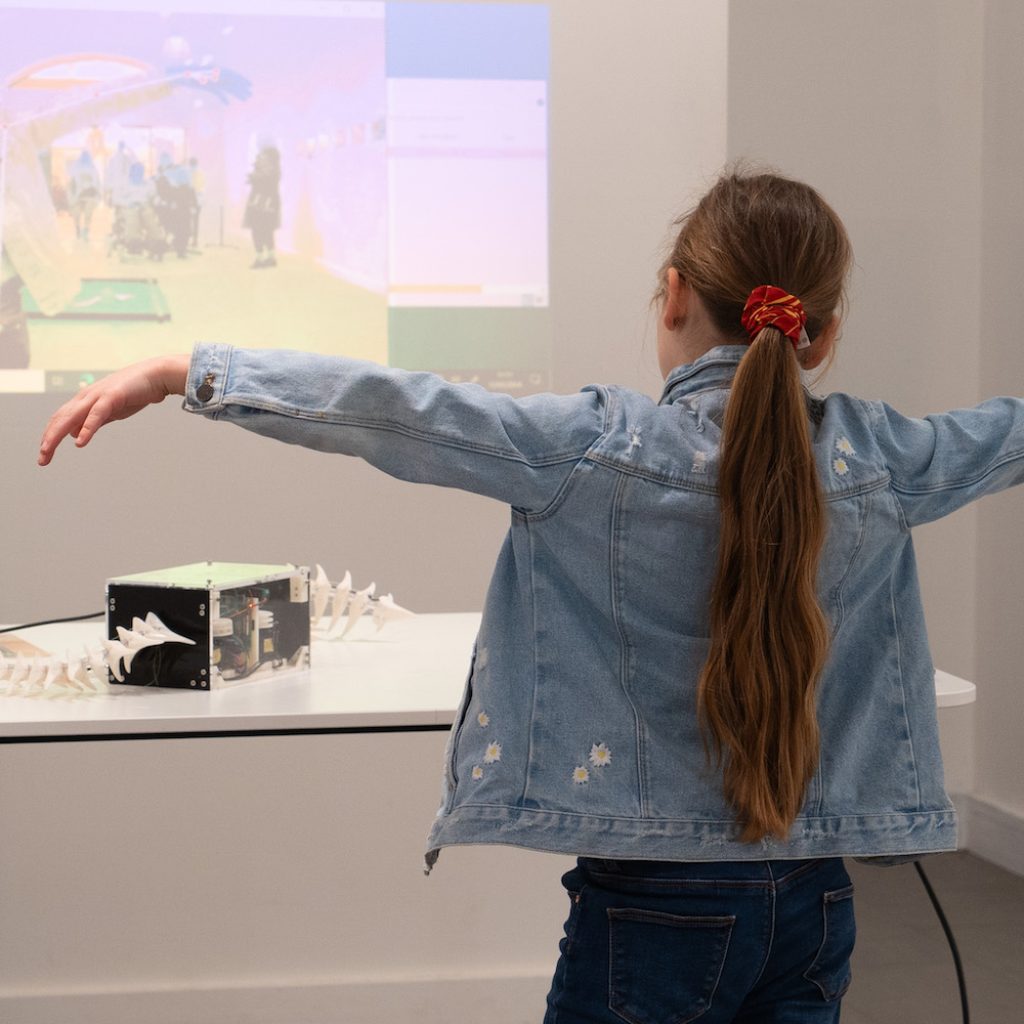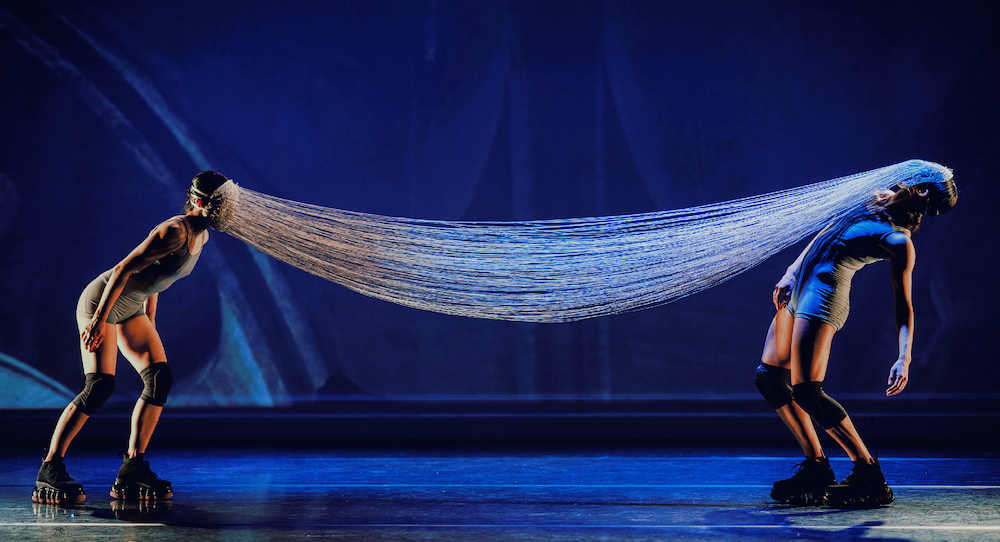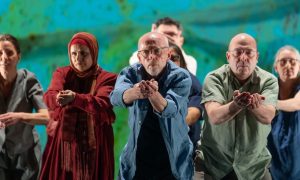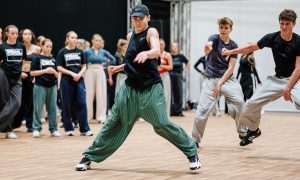Neon Dance integrates technology and design with the body to create work across live performance, digital performance, film and installation. “Embedding technology and design into the heart of what I do means I’m constantly challenging what a body is and what it can do,” says Adrienne Hart, Artistic Director of Swindon-based Neon Dance. “Technology simply becomes part of the tool kit that allows a creative process to take place both physically and digitally.”
Hart established Neon Dance in 2004, to create a field and focus for interdisciplinary collaborations. “As a youth dancer getting to work with the choreographer Wayne McGregor at the start of his career and his ambition to blur the lines between the arts, science, technology and research really left an impression,” she says. “As technology became more and more integrated into my daily life, and I guess because I had experienced both the before and after, it felt natural to experiment and embed the technology into my practice.”

Hart graduated from London Contemporary Dance School in 2002. “I was living in an old warehouse just off of Brick Lane, and many talented artists and creators passed through that building thanks to the eclectic group of people that lived there. One of the residents happened to be Ana Rajcevic, and there was something about her work — she works at the intersection of sculpture, prosthetics and technology — that resonated and has a huge influence over the choreography I create and why I create it. Her wearable sculptures became body extensions and whilst restrictive, gave new possibilities for moving.”
She continues, “In Last and First Men, dance artists Fukiko Takase and Aoi Nakamura open the production standing opposite one another wearing one of Ana Rajcevic’s artefacts. The piece connects the performers together; they can’t move without influencing each other. We created the opening choreography wearing the piece, and the piece in some respects did the work. It offered a way of being/acting and responding, there were limitations but also beautiful imagery that revealed itself through experimentation and play. I don’t think we would have come up with that section of choreography if it wasn’t for that specific design.”

Neon Dance creates interactive installations with its methods as well as performances. “I’m always trying to make work that is flexible in nature,” says Hart, “that can scale up/down and adapt to different spaces and contexts. The digital element reflects how much of our lives are now lived online. I’m interested in making work that can exist in the digital space, whether that be tele-operating a robot via a Zoom call or watching a behind-the-scenes video on your phone.”
During the pandemic, Hart began working with Hemma Philamore and the team at Bristol Robotics Lab. “It was really important to me that we didn’t simply make a robot in the lab, then present it to the world,” she says. “At every step of the way, we’ve had a range of different people with different lived realities feeding into the design of our robots including visually impaired communities in Bristol and young people aged nine to 18 in Swindon.” From workshops, Hart began to “tentatively combine the worlds of robotics and dance to find inventive ways in which to bring physical and remote audiences together.”
At Mechanical Bloom Lab, over 1,300 people of different ages interacted with bio-inspired, live performance robots. Other projects have been seeded and developed from the research and collaborations in robotics.

“Beyond Body and Things, which premiered in Japan as part of Setouchi Art Triennale 2022, was a performance installation in a factory,” says Hart. “We filled it with a thin layer of sand and two turtle-inspired robots. Dancer Fukiko Takase was projected into the space, and her movement influenced how one of our tele-operated robots moved, whilst another identical robot was controlled by audience members. Over time, a ‘sand painting’ emerged with robot and human footprints leaving their mark in the sand.”
Neon Dance has presented its work at Sadler’s Wells, the Volksbühne Berlin, DE, and the Setouchi Art Triennale and Echigo-Tsumari Art Triennale in Japan. The company counts contemporary music luminary Nils Frahm amongst its esteemed collaborators. Worth watching out for.
For more information, head to neondance.org.
By Tamara Searle of Dance Informa.












